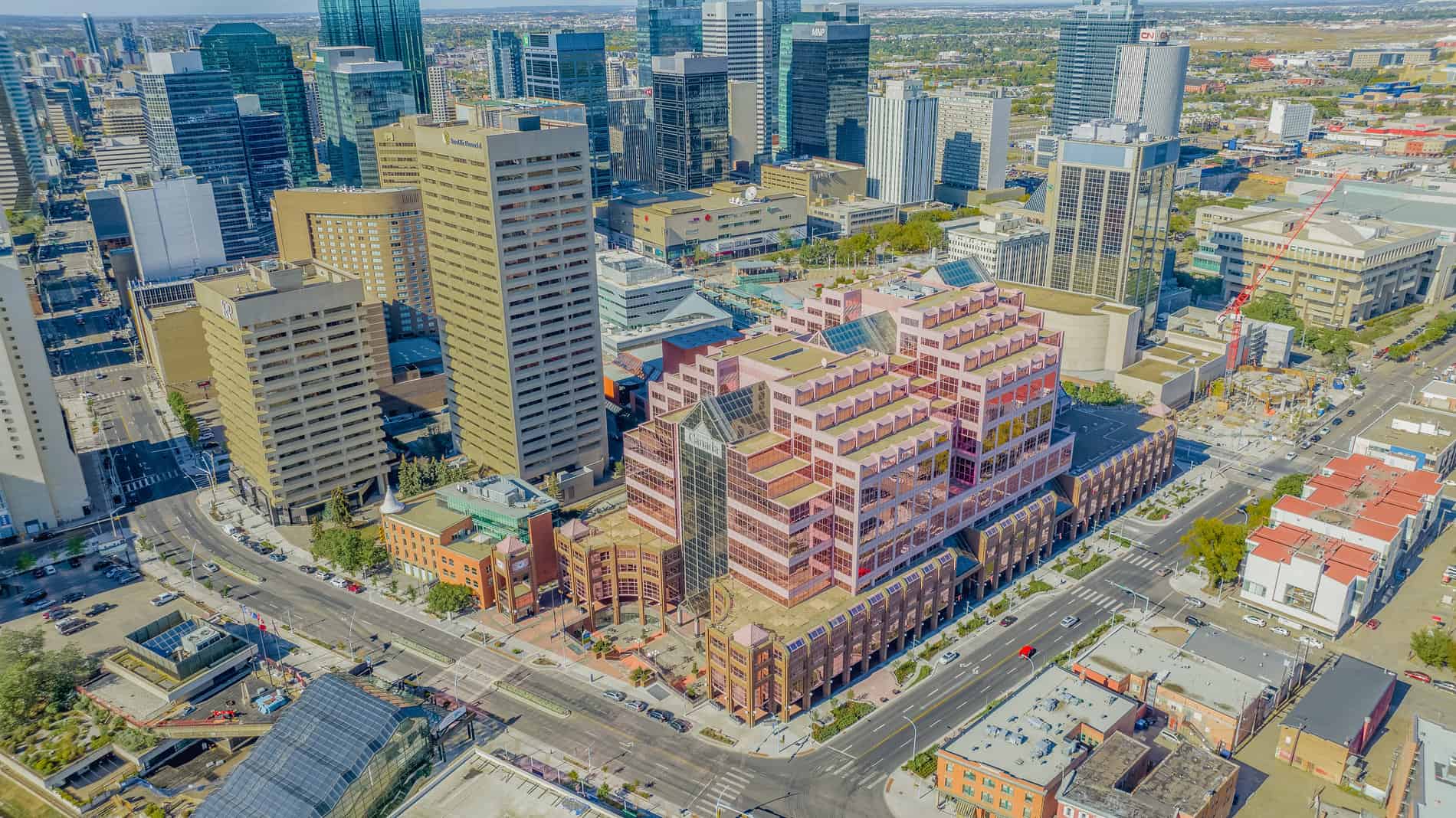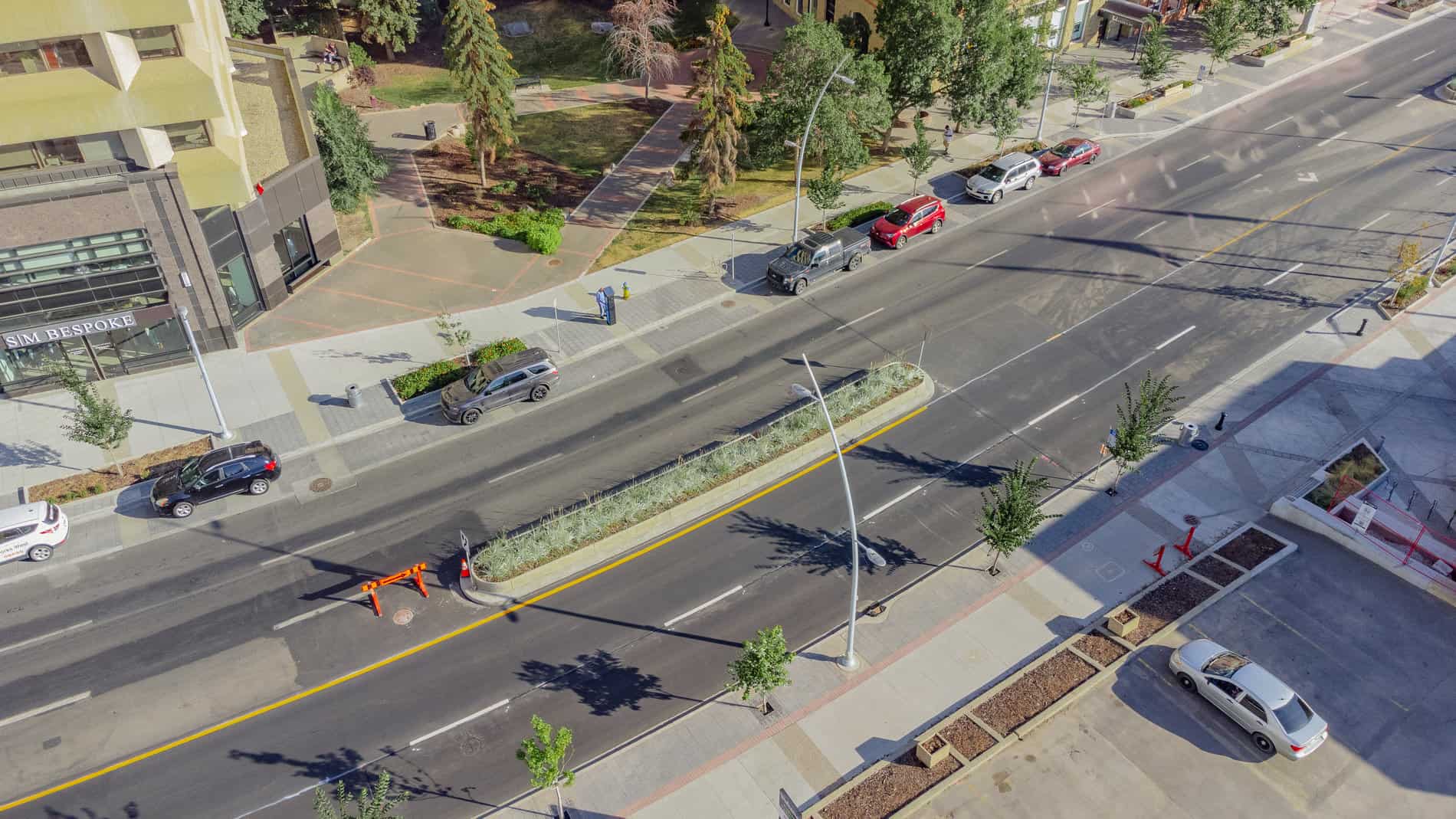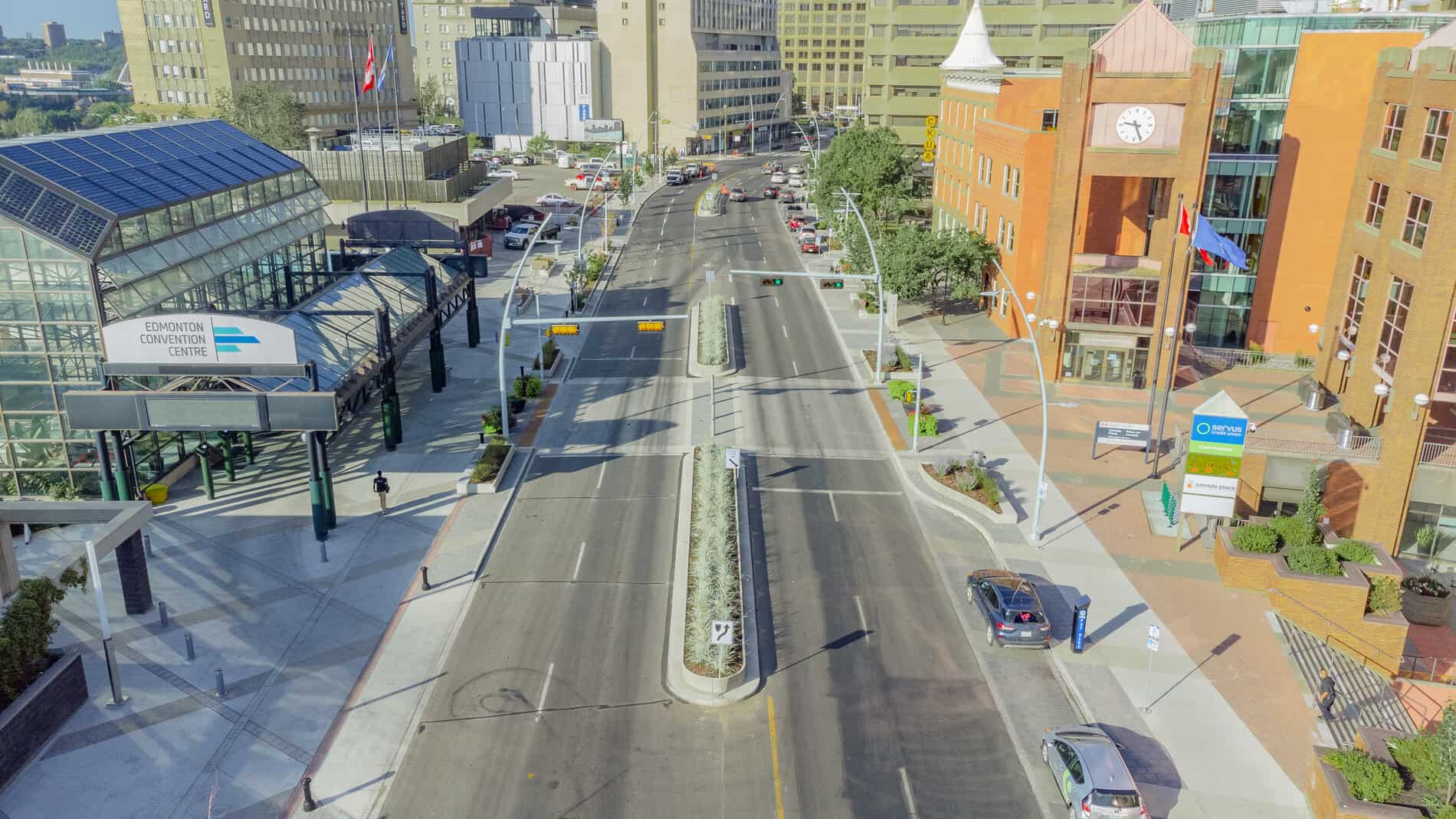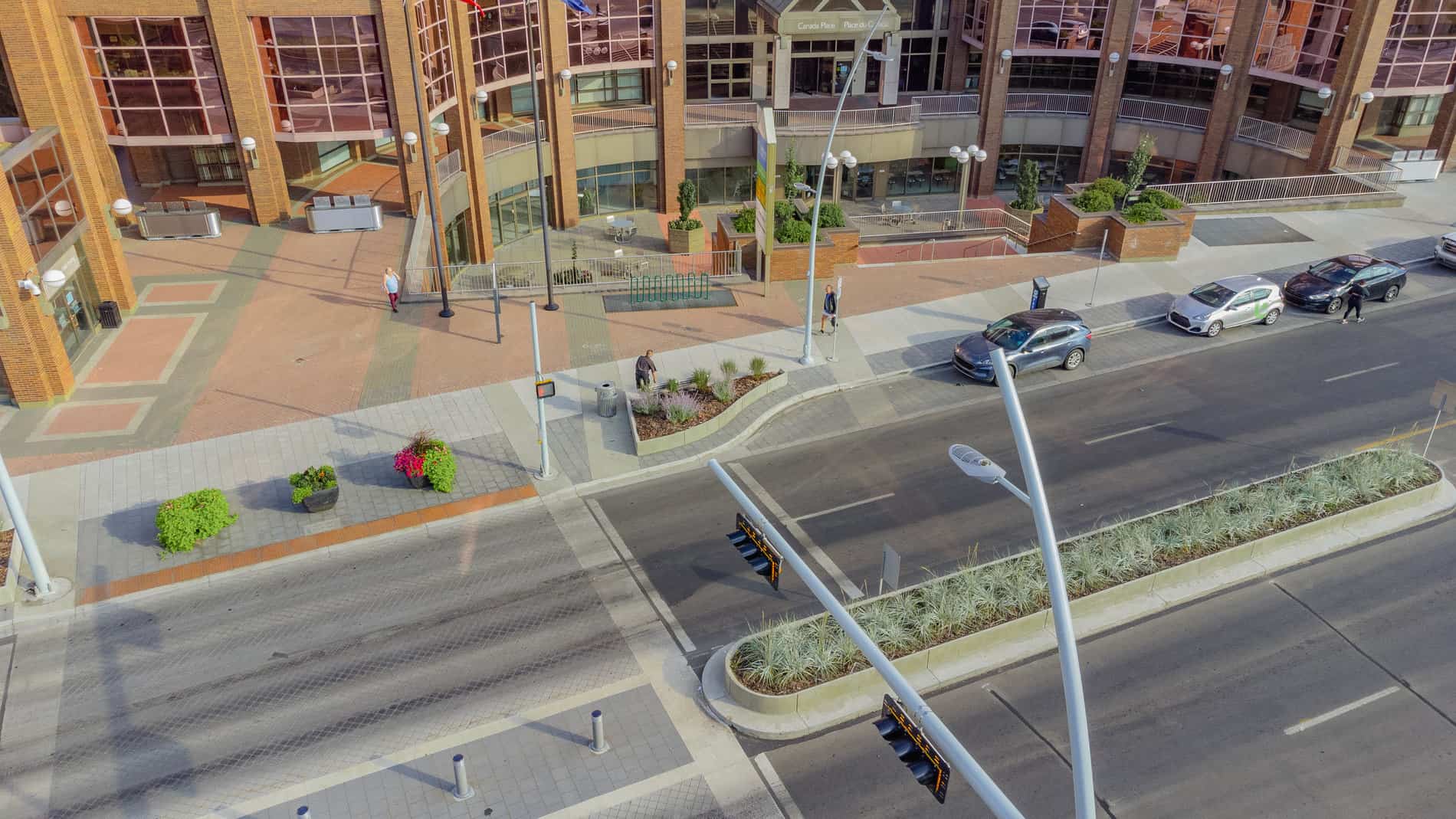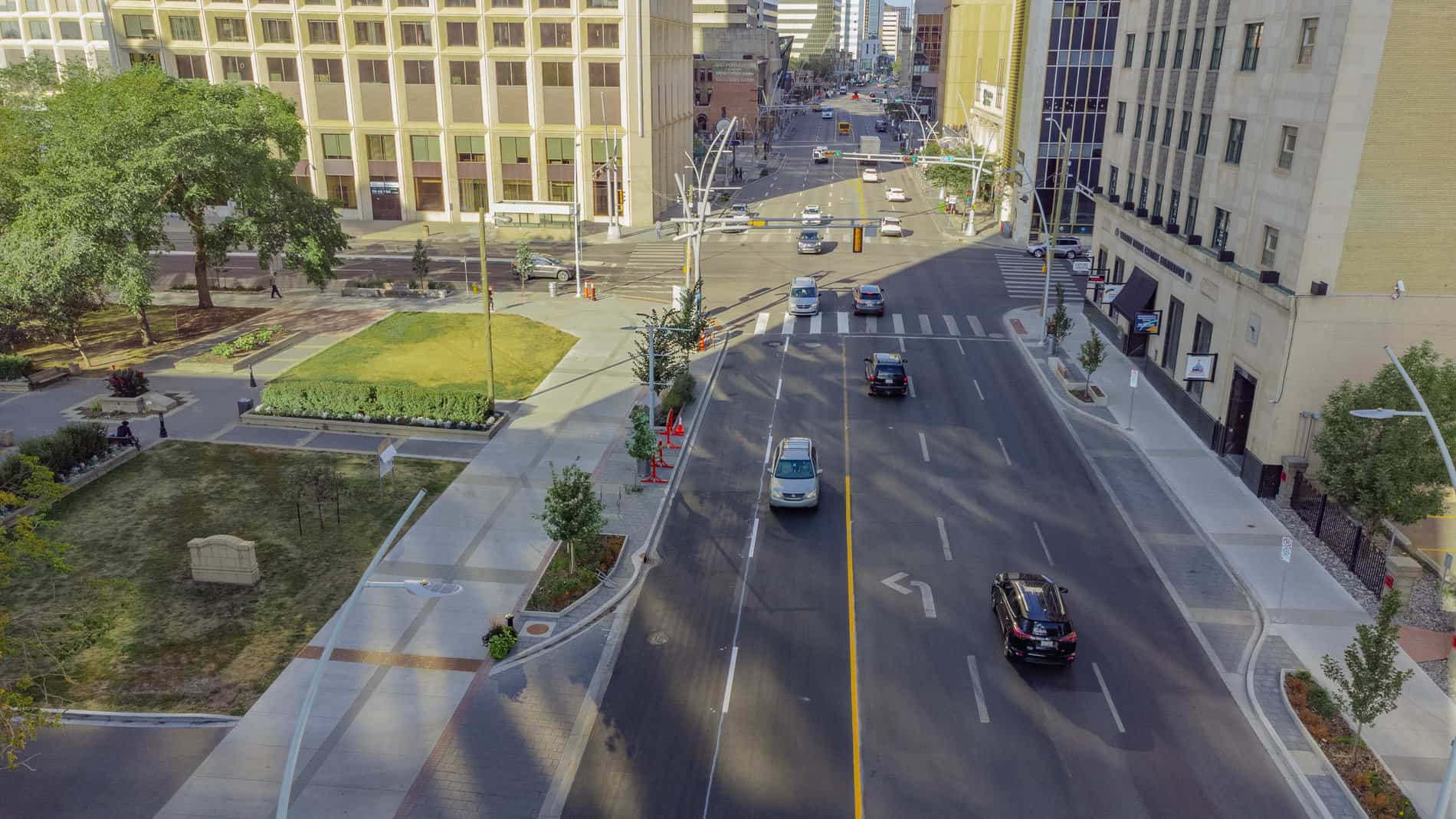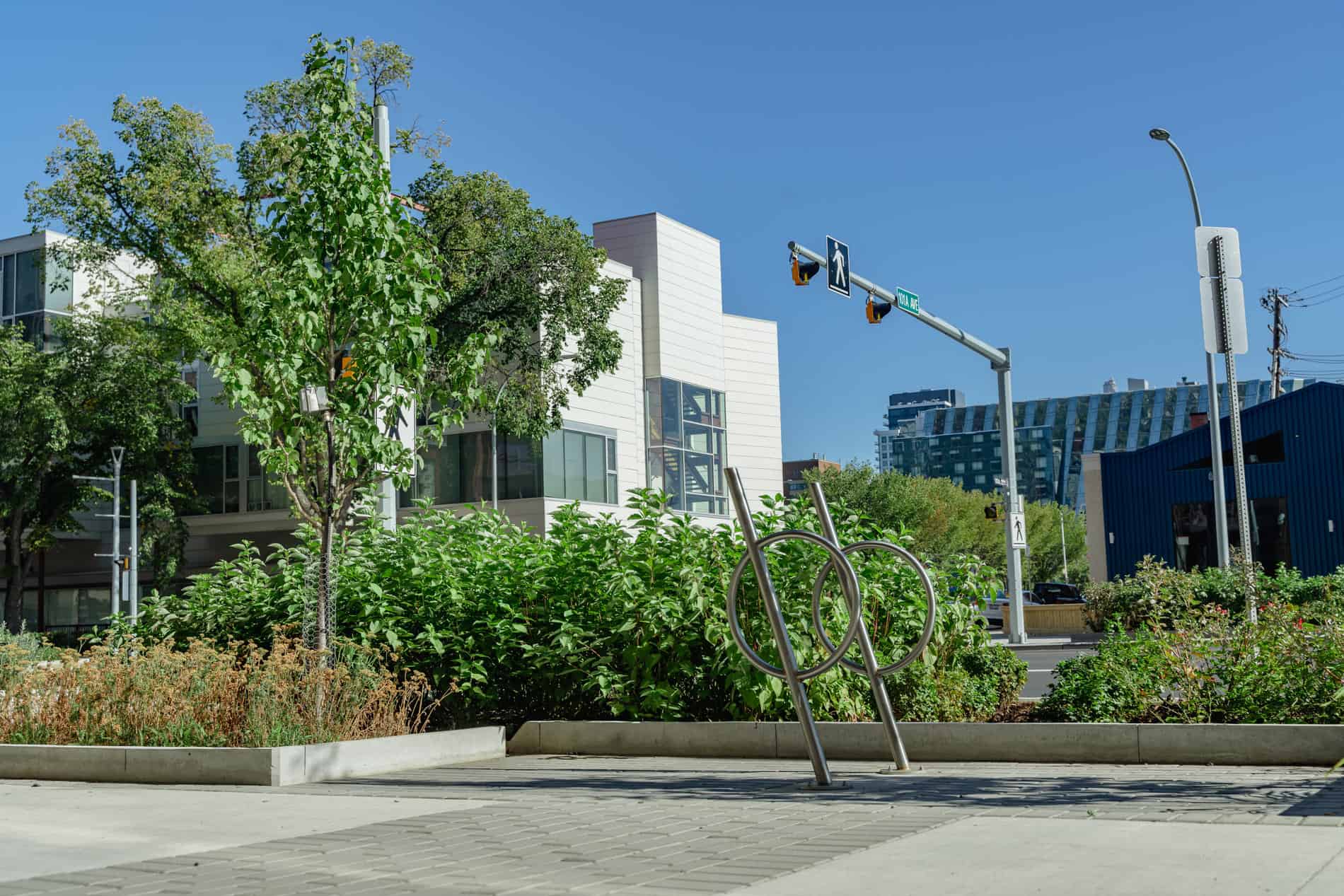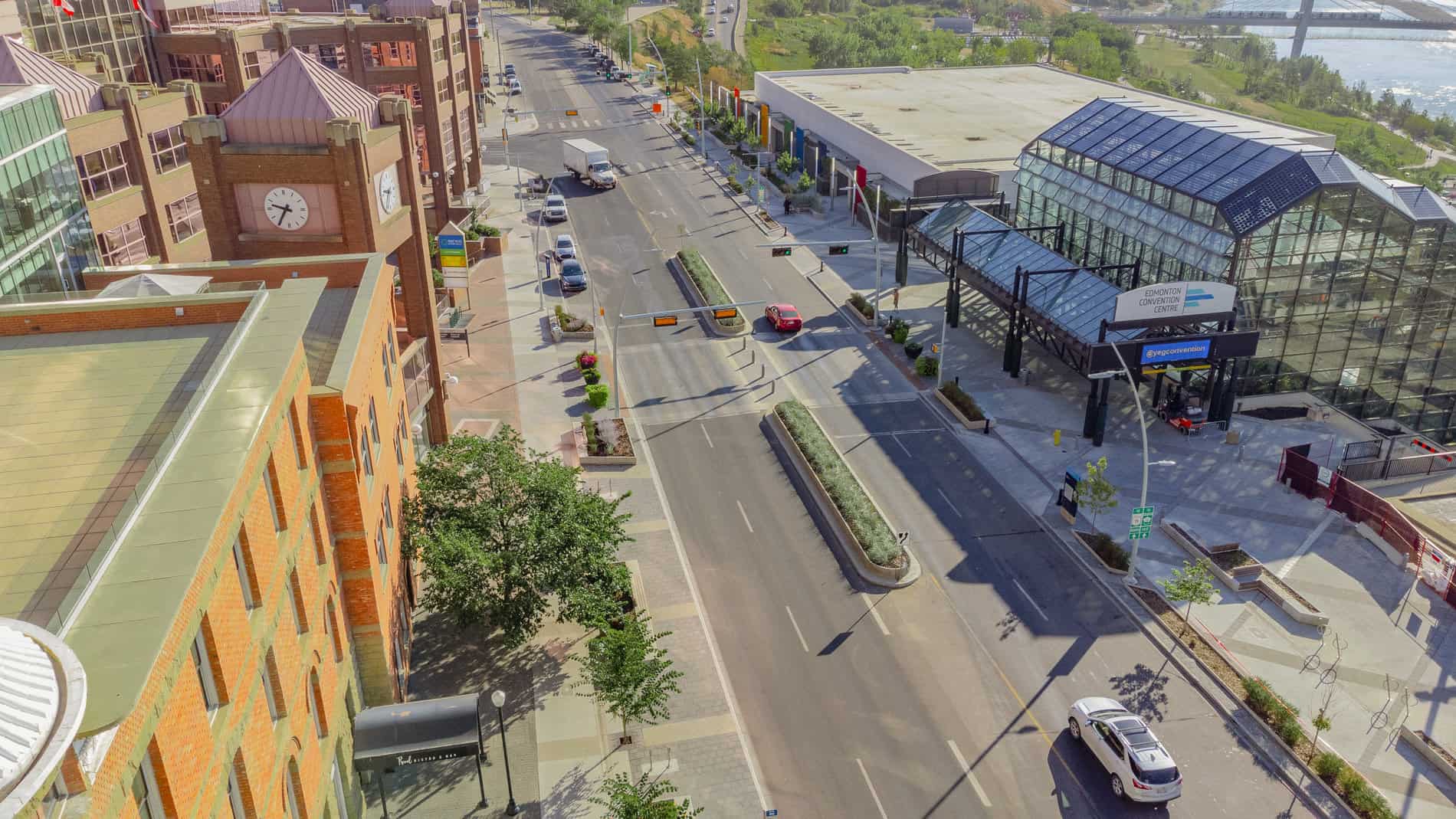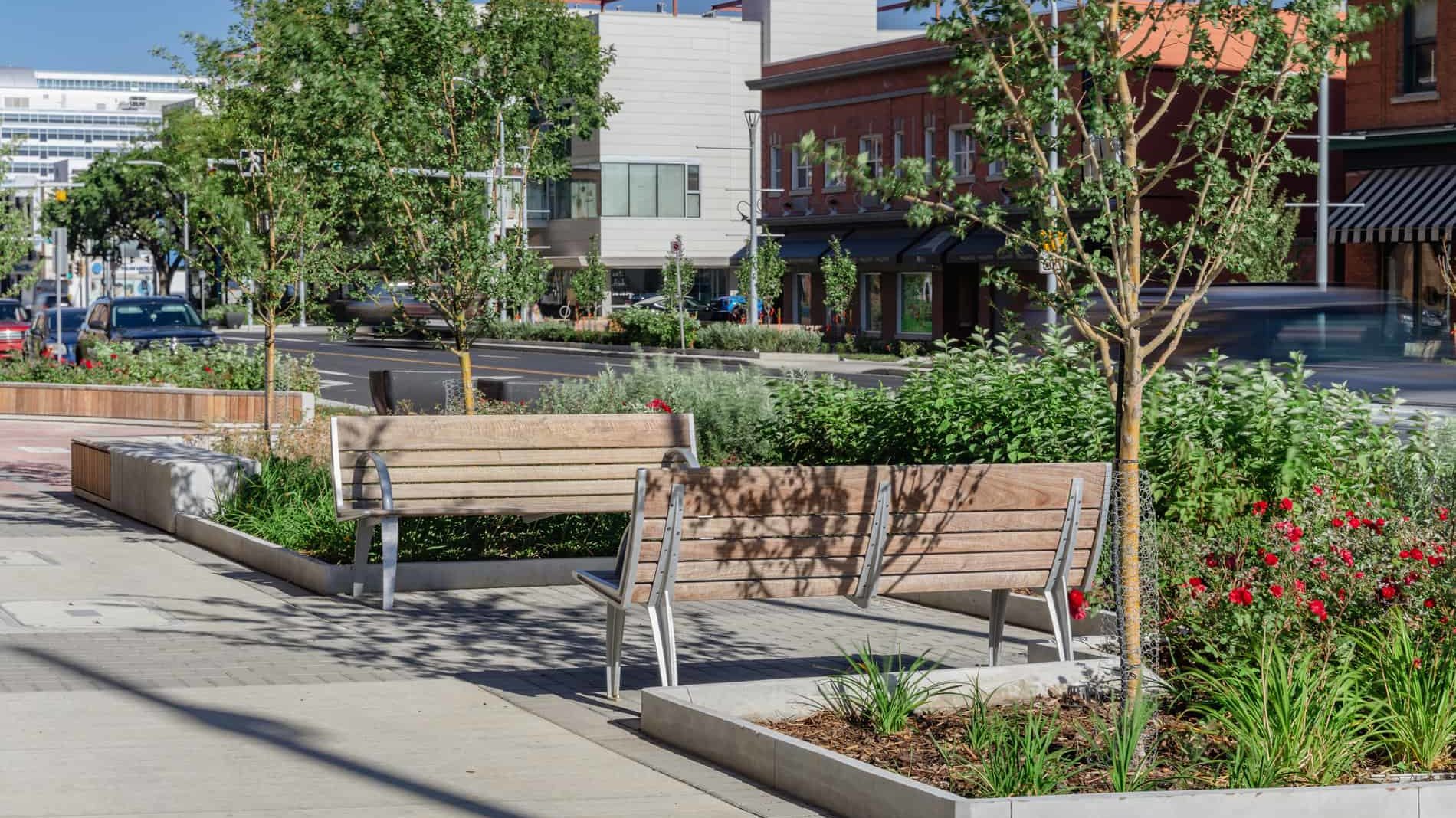Jasper Avenue New Vision
This project was a DIALOG / Al-Terra Joint Venture to provide design, tender, construction supervision, and contract administration for the City of Edmonton’s Jasper Avenue New Vision Phase 2 project. The scope of work includes concept planning for the 2.6 km corridor, as well as preliminary and detailed design for construction of a portion of Jasper Avenue, from 100 Street to 97 Street, and 97 Street, from Jasper Avenue to 102 Avenue.
Jasper Avenue is recognized as an important cultural, social, and economic centre for the City of Edmonton, and is designated as a main city street. As such, the vision for this project was to transform the Avenue into an attractive and vibrant people place, while maintaining its importance as a transportation link. The revitalization of Jasper Avenue’s streetscape is seen as a catalyst to private sector redevelopment, a symbol of the vitality of downtown, and is a place all Edmontonians can be proud of.
The Jasper Avenue streetscape had largely reached the end of its useful life cycle and needed a renewal to improve pedestrian functionality and movement, and to bring a renewed sense of place to Jasper Avenue. A 2011 City of Edmonton report outlined the City’s intent to unify Jasper Avenue from end to end with a consistent pedestrian-focused streetscape typology. The corridor was divided into sections for design and construction and Phase 2 began with design work in 2018 with construction taking place from 2019 to 2022.
An extensive public consultation process using the Construction Consulting General Contractor (CCGC) delivery method, included many high-profile stakeholders. The final design was developed as a result of the Public feedback was received, the evaluation of existing technical constraints, and alignment with City of Edmonton plans and policies.
All modes of transportation were considered and accommodated – transit, passenger vehicles, bicycles, goods delivery vehicles, and above all, pedestrians. The project included a narrowed roadway, a new wider shared-use pathway for pedestrians and cyclists, new planting and landscape enhancements that included structural soil cells to enable street trees to flourish, inclusive custom seating, and a refined streetscape and public realm.
